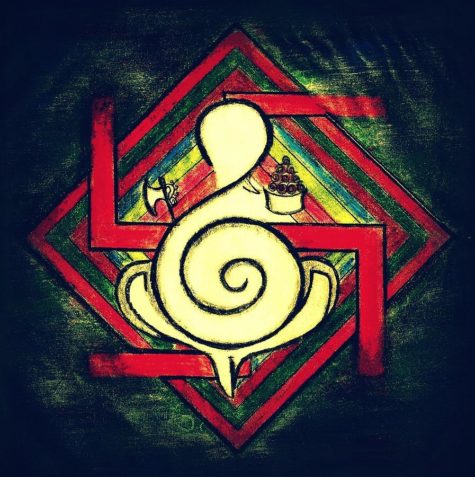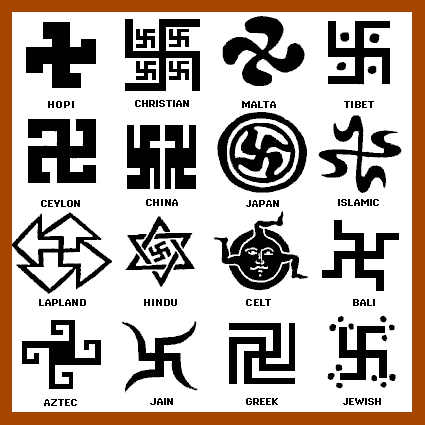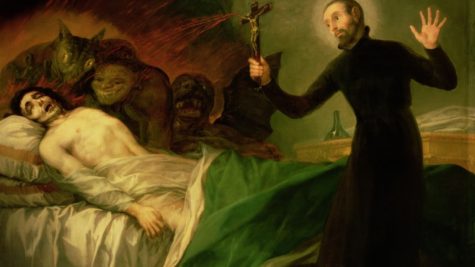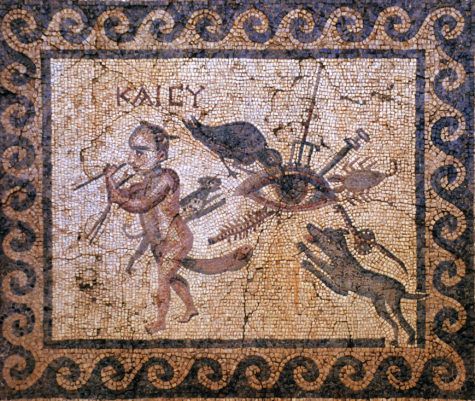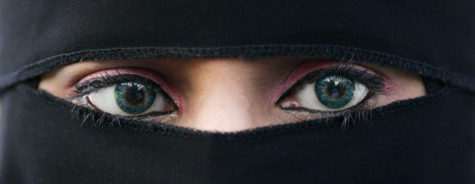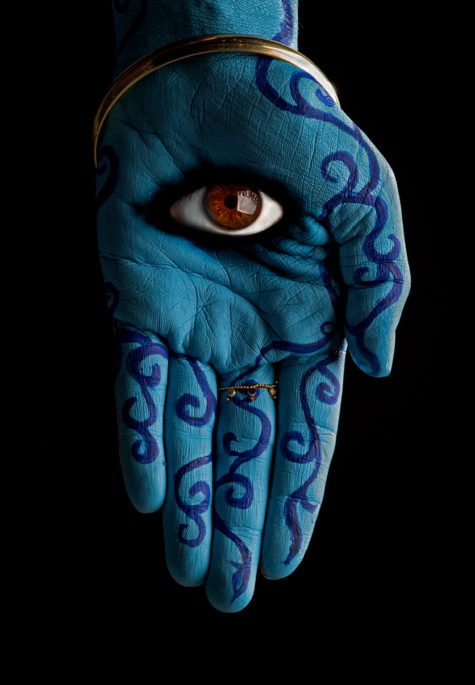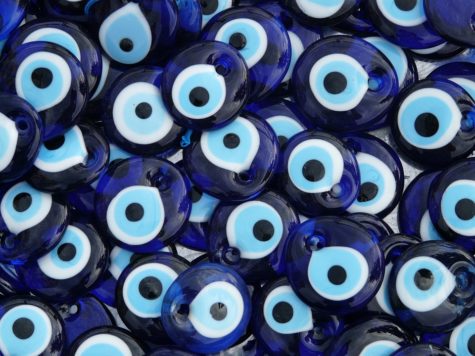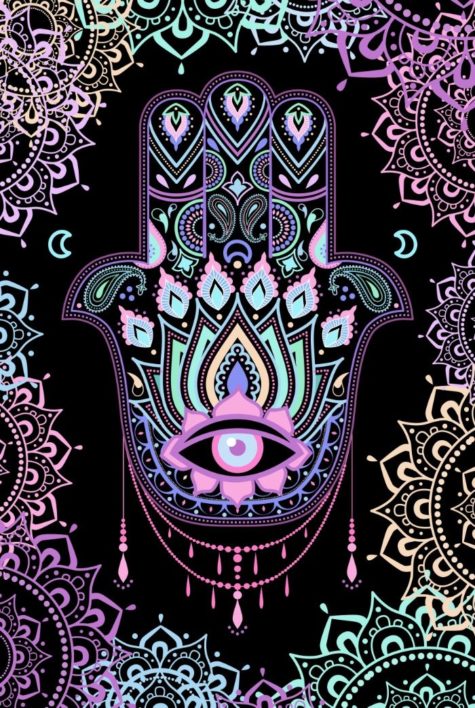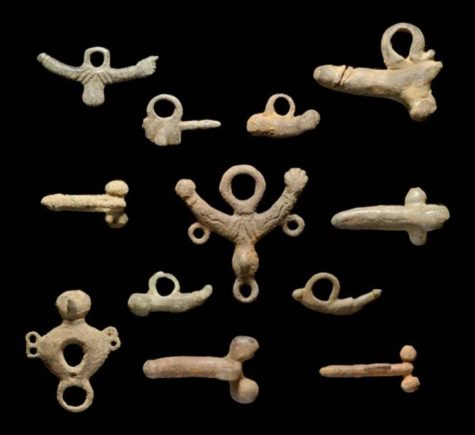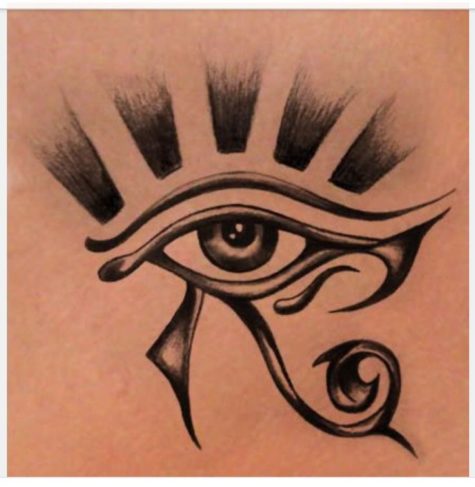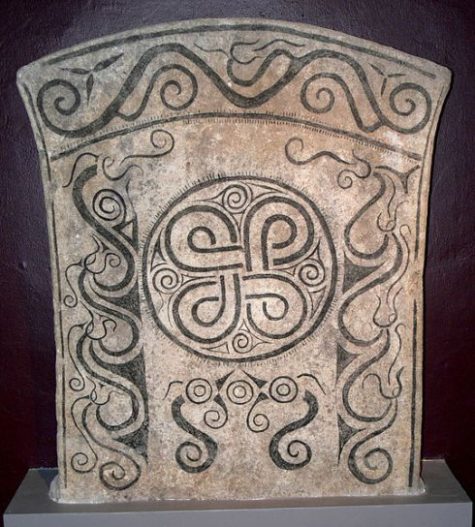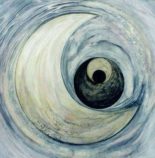Miscellaneous Symbols
The Swastika
The swastika has been regarded as the symbol for good luck, protection and auspiciousness for over five thousand years in India. It is derived from ‘SU-VASTI’ and means “The essence of all goodness”. For Hindus the swastika is a lucky cross associated with the good fortunes given by Lord Ganesha. It also represents the sun and the cycle of life.
This ancient benign symbol is used today by housewives to guard thresholds and doors, by priests to sanctify ceremonies and offerings and by businessmen to bless the opening pages of account books each New Year’s day. No ceremony or sacrifice is considered complete without it, for it is believed to have the power to ward off misfortune and negative forces.
It is said that the swastika’s right-angled arms reflect the fact that the path toward our objectives is often not straight, but takes unexpected turns. They denote also the indirect way in which Divinity is reached — through intuition and not by intellect. Symbolically, the swastika’s cross is said to represent God and creation.
The four bent arms stand for the four human aims:
- Righteousness – dharma
- Wealth – artha
- Love – kama
- Liberation – moksha.
It also represents the world wheel, eternally turning around a fixed center, God. The swastika is associated with the muladhara chakra, the center of consciousness at the base of the spine, and in some yoga schools with the manipura chakra at the navel, the center of the microcosmic sun (surya).
The swastika is a sacred sign of prosperity and auspiciousness, perhaps the single most common emblem in earth cultures. As the Encyclopaedia Britannica explains, “It was a favorite symbol on ancient Mesopotamian coinage; it appeared in early Christian and Byzantine art (where it became known as the gammadion cross because its arms resemble the Greek letter gamma); and it occurred in South and Central America (among the Mayans) and in North America (principally among the Navajos). In India it continues to be the most widely used auspicious symbol of Hindus, Jainas and Buddhists.”
When Buddhism emerged from India’s spiritual wellspring, it inherited the right-angled emblem. Carried by monks, the good-luck design journeyed north over the Himalayas into China, often carved in statues into Buddha’s feet and splayed into a spectrum of decorative meandering or interconnecting swastikas.
On the other side of the planet, American Indians inscribed the spoked sign of good luck into salmon-colored seashells, healing sticks, pottery, woven garments and blankets. Two thousand miles south, the Mayans of the Yucatan chiseled it into temple diagrams.
Once moored to the ancient highland cultures of Asia Minor, the emblem later voyaged around the Mediterranean, through Egypt and Greece, south into the African nations, northward into Saxon lands and Scandinavia and west to Scotland and Ireland.
 In the 1930s, when Adolf Hitler’s Nazi Third Reich rose to power in Germany and engulfed the planet in World War II, the fortunes of the swastika declined. From September 1935 to the fall of the Nazis in 1945 it was displayed on the Reich’s official flag, a black swastika in a white circle against a red field. German soldiers also wore the hackenkrenz (“hooked cross”) on their uniforms, in a circle beneath an eagle, and displayed it on their armory.
In the 1930s, when Adolf Hitler’s Nazi Third Reich rose to power in Germany and engulfed the planet in World War II, the fortunes of the swastika declined. From September 1935 to the fall of the Nazis in 1945 it was displayed on the Reich’s official flag, a black swastika in a white circle against a red field. German soldiers also wore the hackenkrenz (“hooked cross”) on their uniforms, in a circle beneath an eagle, and displayed it on their armory.
In the West it became an infamous, hated symbol of fascism and anti-Semitism and was banned by the Allied Command at the war’s end, though the swastika’s history is as extensive in the West as in Asia.
Because of its infamous association with the Third Reich, the swastika was and still is abhorred by many inside and outside of Germany, still held in disparagement and misunderstanding, which itself is understandable though unfortunate.
Now is a time for this to change, for a return to this solar symbol’s pure and happy beginnings. Ironically, even now Hindus managing temples in Germany innocently display on walls and entryways the swastika, the ancient symbol of Lord Ganesha and more recently the hated insigne of Nazism, alongside the shatkona, six-pointed star, the ancient symbol representing God Siva and Lord Karttikeya and as Star of David, the not so ancient but cherished already for centuries emblem of Judaism.
The swastika is an emblem of geometric perfection. In the mind’s eye it can be stable and still or whirl in perpetual motion, its arms rotating one after another like a cosmic pinwheel. It is unknown why and how the term swastika, “may it be good,” was wedded to this most ancient and pervasive of symbols. Most authorities designate the right-hand swastika as a solar emblem, capturing the sun’s path from east to west, a clockwise motion. One theory says it represents the outward dispersion of the universe.
One of its finest meanings is that transcendent reality is not attained directly through the logic of the mind, but indirectly and mysteriously through the intuitive, cosmic mind. Though Hindus use the swastika straight up and down, other cultures rotated it at various angles.
From a mystically occult point of view the swastika is a type of yantra, a psychic diagram representing the four-petalled muladhara chakra located at the base of the spine within everyone.
Much of this information came from Loving Ganesa
by Satguru Sivaya Subramuniyaswami
The Evil Eye
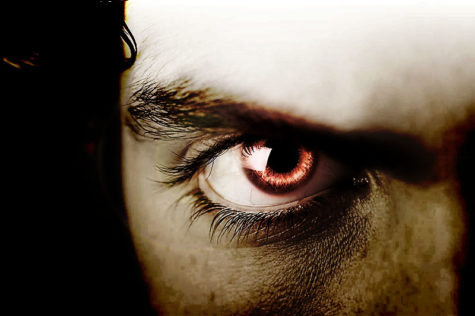
The evil eye is a specific type of magical curse. It is believed to cause harm, illness and even death.The evil eye is a specific type of magical curse. It is believed to cause harm, illness and even death.
Everyone gets a dirty look now and then, and we usually think little of it (especially if we deserved it). For most of us it is soon shrugged off, but in many places belief in “the evil eye” is taken very seriously, and requires immediate action to avoid harm.
The evil eye is a human look believed to cause harm to someone or something. The supernatural harm may come in the form of a minor misfortune, or more serious disease, injury — even death. Folklorist Alan Dundes, in his edited volume “The Evil Eye: A Casebook” notes that “the victim’s good fortune, good health, or good looks — or unguarded comments about them — invite or provoke an attack by someone with the evil eye …
Symptoms of illness caused by the evil eye include loss of appetite, excessive yawning, hiccups, vomiting and fever. If the object attacked is a cow, its milk may dry up; if a plant or fruit tree, it may suddenly wither and die.”
The evil eye is also said to cause a number of other maladies including insomnia, fatigue, depression and diarrhea. In many places, disease is considered a magical as well as a medical issue, and the reason a given person succumbs to a malady may be attributed to a curse instead of random chance or exposure to a virus. It can even affect objects and buildings: The evil eye cast upon a vehicle may break down irreparably, while a house so cursed may soon develop a leaky roof or an insect infestation. Just about anything that goes wrong may be blamed on the power of the evil eye.
The evil eye is essentially a specific type of magical curse. Let’s say that a person experiences bad luck, ill health, accident, or some unexplained calamity — perhaps a drought or an infectious disease. Before science could explain weather patterns and germ theory, any bad event for which there was not an obvious cause might be blamed on a curse. Curses, including the evil eye, are an answer to the age-old question of why bad things happen to good people.
Evil eye in history
The evil eye is well known throughout history. It is mentioned in ancient Greek and Roman texts, as well as in many famous literary works, including the Bible (such as Proverbs 23:6: “Eat thou not the bread of him that hath an evil eye, neither desire thou his dainty meats”) the Koran and Shakespeare’s plays. Though belief in the evil eye is widespread, it is not universal. A 1976 cross-cultural survey by folklorist John Roberts found that 36 percent of cultures believed in the evil eye.
The earliest known evidence for belief in the evil eye goes back to ancient Greece and Rome. It was believed that the evil eye was the largest threat to anyone who had been praised too much, or received admiration beyond what they truly deserved. The praised person would become so swollen with pride that he or she would bring about his or her own doom via the evil eye, which was believed to be able to cause physical and mental illness. In fact, any disease which did not have an immediate, obvious cause was thought to be caused by the evil eye. It was thought that the gods and goddesses were punishing those who had become too proud of their achievements, and destroyed them with the power of the evil eye to restore them to the level of mere mortals.
The symbol and superstition of the evil eye is one of the strongest symbolic images in the world. Yet, despite the differences in the cultures which hold the evil eye myth, it retains largely the same meaning no matter where the story is told. The evil eye is thought of as a look given to inflict harm, suffering, or some form of bad luck on those that it is cast upon. It is a look which clearly states that one intends for something bad to happen to the object of one’s focus, either out of jealousy or pure malice. The superstition of the evil eye holds that the malicious look is powerful enough to bring about actual disaster for the unfortunate person that is the receiver of the glare.
Eyes are said to have special powers; they are said to be the gateway to a person’s soul.
The evil eye is a powerful superstition in India. Hinduism preaches that the eye is the most powerful point at which the body can give off energy. Thus, a strong fear of an “evil” look from the eye makes sense; the evil eye holds enormous powers. The Hindus fear that even an “admirable” eye can bring about ill luck, resulting in the supply of milk from cows drying up (again, this idea dates back to the fear of undue praise, first warned against in Greece). In fact, the Hindus will offer the “admiring” glancer a bowl of milk to counteract the threat of the evil eye.
The Hindus also believe that jealousy is at the root of the power of the evil eye, whether in the form of a malicious or admirable look. Interestingly, the Hindus teach that the times of change in life–as in during puberty, marriage, or childbirth–one is most vulnerable to the threat of the evil eye.
Hindus believe that even animals such as the snake are capable of giving one the evil eye. They believe that, even though men are capable of casting the evil eye, women are the most common sources of the glance. For this reason, in South India women will paint their eyelids black to protect themselves from the evil eye, and to prevent themselves from eyeing another with the look.
In South America, Brazil holds a superstition equivalent to the evil eye known as the “fat eye.” Compliments which are sincere are not feared to cause the evil eye to attack as in other countries, but insincere compliments are thought to put one at stake.
In Europe, the myth of the evil eye also originated with the idea that envious or malicious looks had the power to bring about bad luck. The largest source of the evil eye was believed to be witches. Yet those with eye colors which were rare were also seen as powerful possessors of the evil eye look. For instance, Germans feared those with red eyes. In Ireland, those with squinty eyes were feared to be evil eye sorcerers. In Italy, the unibrow was another sign that one would cast an evil eye.
Shifting eyes are said to subtly betray liars, while a steady gaze may be endearing or menacing depending on the circumstances. Eye contact can create an intensely personal connection, whether between lovers or superiors and subordinates. Glaring or intense staring can convey power and authority over another. And of course, actors use their eyes to convey a wide range of emotions, including love, hate, disgust, boredom, scorn, surprise and envy. In fact it is this last emotion — jealousy — that underlies the evil eye’s cultural association with magic.
Belief in the power of the eyes is so powerful that any eye affliction has come to suggest evil and bad luck. People who are cross-eyed, have uncontrollable eye twitches or spasms (a condition called blepharospasm), or who merely have a prominent squint have been shunned and feared as provoking bad luck, especially among those who work in dangerous occupations such as fishing and mining. Similarly, those with unusually close-set eyes or eyes of different colors were often suspected of having the evil eye.
Babies and children are said to be especially susceptible to harm from the evil eye, and in many countries, including Greece, Romania, and India, praising a child publicly is sometimes considered taboo, for the compliment will draw the attention of the evil eye. In order to ward off the evil eye, parents of a thoughtlessly praised child may ask the person who gave the compliment to immediately spit in the child’s face. Because the momentarily exalted youngster has been brought down a peg, any harm by the evil eye is unnecessary; this spittle salve is harmless yet insulting enough to negate the compliment.
The fear of the evil eye did not carry over to America, except in the form of a metaphor. While the superstition is not intense enough to take precaution, the evil eye is seen as impolite, and a warning that the source of the evil eye has bad intentions.
Who has the evil eye? Maybe you do. Many believe that bad intention is not necessary, and that some people can cast an evil eye without even knowing it. If one person is believed to have the evil eye, other members of his or her family are often treated with suspicion — and any children are assumed to have the curse as well.
Methods of Protection against the Evil Eye
The best way to deal with the evil eye is to avoid it in the first place. The method varies by culture, geographic region, and personal preference. In Puerto Rico, for example, newborns are often given a good luck charm called an azabache to protect them from the evil eye.
In addition to the use of evil eye amulets, the Greeks would carry incense or the cross as protection against the evil eye. New mothers would keep objects as protection under their pillows or on their heads, and these included red, black, or white strings, a nail, gunpowder, bread, salt, garlic, a ring, indigo blue, or a pair of silver buckles. Each of these objects held a meaning which made it a good defense against the evil eye. For instance, gunpowder symbolized an ability to fight back against the evil eye. The nail symbolized strength. The indigo held its power in its blue coloring. Salt was a symbol of preservation and strength.
Amulets can be worn to deter the evil eye, often using the color blue (symbolizing heaven or godliness) and an eye symbol. Charms, potions and spells can also be prepared; garlic can be used to deter the evil eye, and some believe that just saying the word “garlic” offers protection.
The most popular method of escaping the evil eye’s effects in many cultures is by the use of evil eye talismans, evil eye symbols, and evil eye jewelry. These are meant to “reflect” the power of the evil look. The evil eye amulet originated in Greece, where it was known as an “apotropaic” amulet, meaning that it reflected harm.
The most basic design of the evil eye, prevalent in the Middle East, is a talisman designed with concentric blue and white circles made to symbolize the evil eye, known as the nazar. It is often used on houses, vehicles, or jewelry.
One of the most powerful examples of the evil eye amulet in the Middle East and Africa is the Hamsa, also known as the “Hand of Fatima.” The hamsa is a hand-shaped symbol with the evil eye on the palm. The hamsa can be used in wallpaper or jewelry to ward off the evil eye. The hamsa is also found in Jewish culture, where it is known as the “Hand of God” or the “Hand of Miriam.” The popularity of Kabbalah has revived the hamsa and influenced its presence in jewelry and design.
In ancient Rome, the most common amulets were used to avert the influence of the evil eye appears to have been the phallus, called by the Romans fascinum, which was hung round the necks of children. Pliny also says that Satyrica signa, by which he means the phallus, were placed in gardens and on hearths as a protection against the fascinations of the envious; and we learn from Pollux that smiths were accustomed to place the same figures before their forges with the same design.
Sometimes other objects were employed for this purpose. Peisistratus is said to have hung the figure of a kind of grasshopper before the Acropolis as a preservative against fascination Another common mode of averting fascination was by spitting into the folds of one’s own dress.
According to Pliny, Fascinus was the name of a god, who was worshiped among the Roman sacra by the Vestal virgins, and was placed under the chariot of those who triumphed as a protection against fascination; by which he means in all probability that the phallus was placed under the chariot.
Evil Eye Remedies
If these preventative steps failed, however, the Greeks had many more remedies against the evil eye. In some villages, the fur of a bear would be burned to cure the curse. In others, a gypsy would massage the forehead to get rid of the ill effects of the evil eye.
In many countries, including Greece, Armenia, and Assyria, it is thought that a pinch on the rear will remedy the curse of the evil eye. In Europe, some Christians have the tradition of creating the sign of the cross with their hands, while at the same time pointing the index and pinky finger toward the source of the evil eye. In Bangladesh, a black dot is drawn on the forehead of children to ward off the evil eye curse. Pretty young women have a secret dot drawn in kohl behind their ears to protect against the evil eye.
Often those who believe they have been harmed by the evil eye will seek out shamans, witch doctors, psychics or other spiritual healers to remove the curse.
In Latin America the evil eye is known as “mal de ojo,” and belief in it is especially widespread in rural areas. There are several ways to cure mal de ojo; one traditional method from Mexico involves the use of a raw egg. The egg, a universal symbol of purity and birth, is said to absorb evil energies as it passes over the forehead and prone body of the victim. The egg is then broken over a bowl of water and the resulting forms closely examined for any unusual shapes. An oval or eye shape seen in the yolk or whites is said to indicate that the evil eye’s power has been successfully removed from the victim. Some claim that the gender of the person who cast the evil eye can be determined from the shapes.
In different languages, the evil eye is known as:
- Arabic – Ayin Harsha
- Farsi – Bla Band
- France – Mauvais Oeil
- Germany – Böser Blick
- Hebrew – Ayin Ha’ra
- Italian – Mal Occhio
- Romans – Oculus Malus
- Scotland – Droch Shuil
- Spanish – Mal Ojo or El Oja
- Turkish – Nazar Boncugu
The Evil Eye Today
It is tempting to view the evil eye as an ancient, discredited belief that plays no role in our 21st-century world. Instead, as folklorist Dundes notes, we “should keep in mind that the evil eye is not some old-fashioned superstitious belief of interest solely to antiquarians. The evil eye continues to be a powerful factor affecting the behavior of countless millions of people throughout the world.”
The evil eye still has powerful influence in modern life, pop culture, and even jewelry and design. Who is not familiar with the phrase “the evil eye,” or thought to have caught someone casting it their way at least once or twice before? In Turkey, the Evil Eye is ingrained in every day life and has deep symbolism throughout the culture. The Evil Eye pendant is affixed to anything that is perceived to attract greed, envy, or ill-will. In Turkey, you will find the Evil Eye symbol on currency, in homes and offices, hanging from the necks of newborn children and farm animals, and in the foundations of buildings.
Though belief in the evil eye can be a harmless superstition, it can also be dangerous in some circumstances. Any time one person believes that another has harmed them — whether naturally or supernaturally, intentionally or accidentally — there is the potential for deadly retribution. Like other accused witches and sorcerers over the centuries, many people have been attacked, beaten, and killed for casting an evil eye.
From: Live Science and other sources
The Looped Square
 The looped square (⌘) is a symbol consisting of a square with outward pointing loops at its corners. Also called a Shield Knot, it is a universal symbol of protection, seen in all cultures around the world.
The looped square (⌘) is a symbol consisting of a square with outward pointing loops at its corners. Also called a Shield Knot, it is a universal symbol of protection, seen in all cultures around the world.
Although it takes different forms, the distinctive features that make it a powerful protecting charm are the square shape and the interlacing pattern.
One of the earliest known forms is from Mesopotamia and simply consists of a square with a loop at each corner. The same symbol appears in the Kabbalah as the “Shema,” used to invoke the four Archangels
It can also represent:
- Love
- Flow
- Infinity
- Flowing water
This ancient symbol belongs to a class of symbols which are called valknute in Norway. It goes by many names and has many different variations. The looped knot is used by several cultures, and remains in common use today.
In Finland, the symbol was painted or carved on houses and barns, and domestic utensils such as tableware, to protect them and their owners from evil spirits and bad luck. The symbol appears on a number of old objects in Northern Europe. It features prominently on a picture stone from Hablingbo, Gotland, Sweden, that was created between 400 and 600 AD.
In modern times, the symbol is commonly found in Ukraine, Belarus, Denmark, Estonia, Finland, Germany, Iceland, Latvia, Lithuania, Norway, and Sweden as an indicator of locations of cultural interest, beginning in the Scandinavian countries in the late 1960s. It is used as the place of interest marker on information signs and maps, a practice which started in Nordic countries in the late 1960s.
In Sweden, you might call it the sankthanskors symbol. There has been modern speculation that it was chosen for its resemblance to an aerial view of Borgholm Castle; however, the symbol is well-represented in Scandinavian artifacts that predate the current castle by centuries.
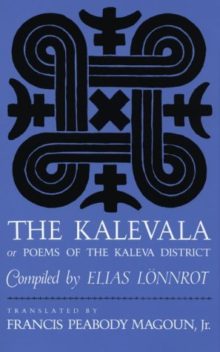 This symbol was also featured on the cover of a printing of The Kalevala, and is sometimes referred to as the Kalevala Symbol. The Kalevala or The Kalewala is a 19th-century work of epic poetry compiled by Elias Lönnrot from Karelian and Finnish oral folklore and mythology.
This symbol was also featured on the cover of a printing of The Kalevala, and is sometimes referred to as the Kalevala Symbol. The Kalevala or The Kalewala is a 19th-century work of epic poetry compiled by Elias Lönnrot from Karelian and Finnish oral folklore and mythology.
It is regarded as the national epic of Karelia and Finland and is one of the most significant works of Finnish literature. The Kalevala played an instrumental role in the development of the Finnish national identity, the intensification of Finland’s language strife and the growing sense of nationality that ultimately led to Finland’s independence from Russia in 1917. Kalevala Day is celebrated in Finland on February 28.
The Cox Mound Gorget, is a similar symbol which played a major role in the lives of Tennessee, Mississippi, and Alabama inhabitants as early as 1250 A.D. It has quite an interesting history, and has it’s own separate page here: The Cox Mound Gorget.
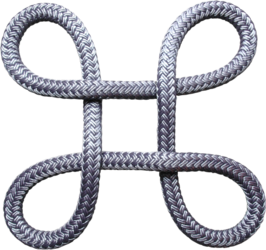 When the symbol is made with a rope, it is known as a Bowen knot. This is a traditional heraldic emblem also sometimes called a Shield Knot. The Bowen knot is a heraldic knot for the Bowen family crest.
When the symbol is made with a rope, it is known as a Bowen knot. This is a traditional heraldic emblem also sometimes called a Shield Knot. The Bowen knot is a heraldic knot for the Bowen family crest.
Other names for this symbol include:
- Saint John’s Arms
- Saint Hannes Cross
- Sankthanskor
- Hannunvaakuna
- Gorgon Loop
- Johanneskor
Today, you might know it as the “Apple command key” symbol. From its obscure Scandinavian roots, the Saint John’s Arms, or Looped Square vaulted into international fame during the 80s. Originally Apple computer utilized the “open apple” and “closed apple” as its command keys.
In 1984, when the Macintosh personal computer was introduced, Steve Jobs decided that using the apple for shortcut commands was denigrating the brand. According to Apple insider Andy Hertzfeld, when Jobs saw how many apple commands were in an early version of MacDraw he peremptorily told the design team, “There are too many Apples on the screen! It’s ridiculous! We’re taking the Apple logo in vain! We’ve got to stop doing that!”
The bitmap artist, Susan Kare, flipped through her dictionary of international symbols until she found one that easily translated into 16 bit-resolution. It was the looped square symbol—which the symbol dictionary said indicated camping grounds in Sweden.
Collected from various sources.

